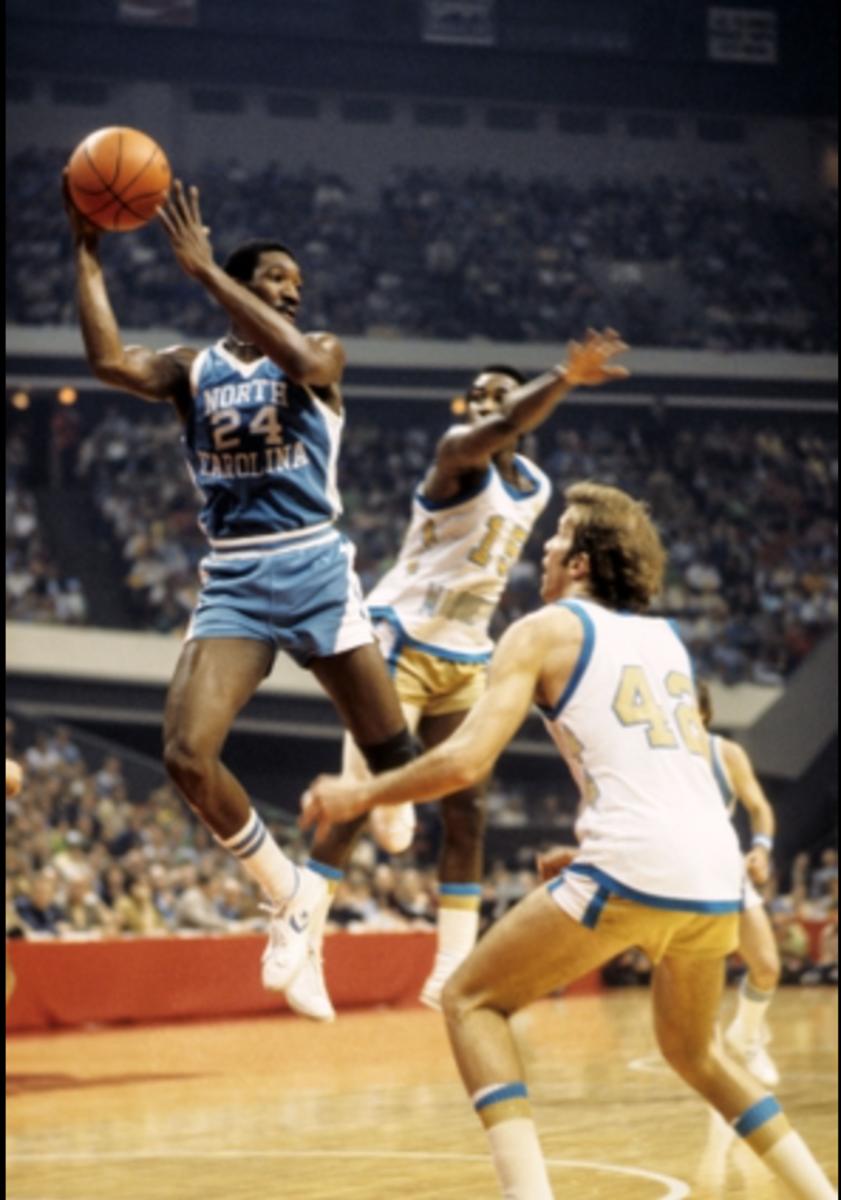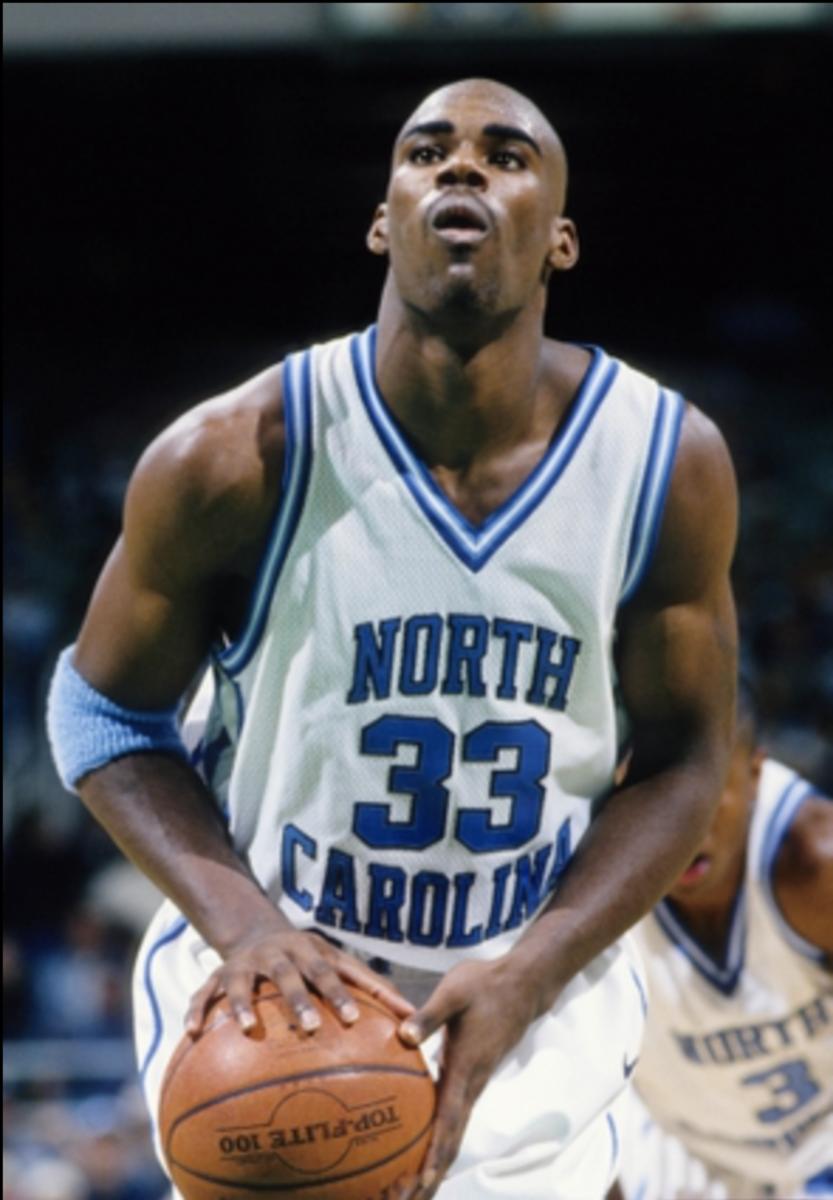Tar Heels Dominate the NBA Top 100 Career Scoring List
On June 4, the NBA began rolling out plans for the resumption and completion of the 2019-20 season. Everything seems to be up in the air right now about what will actually happen. Some players are understandably hesitant. Others are all for the plan. Regardless of what actually comes to fruition, it does appear that several teams, including Vince Carter’s Hawks, are finished for the season.
This means that his incredible and lengthy career will come to an end he likely never imagined. Upon hearing this news, ESPN’s Bryan Ives sent out the following two tweets:
The format to finish the NBA season likely means Vince Carter’s career is over.
— Bryan Ives (@awaytoworthy) June 4, 2020
Only two former ACC players scored more career points than Carter.
Michael Jordan and Tim Duncan.
Carter’s college teammate and player he was traded for on draft night - Antawn Jamison - is the 4th-highest scoring former ACC player in NBA history.
— Bryan Ives (@awaytoworthy) June 4, 2020
1. Jordan
2. Duncan
3. Carter
4. Jamison
5. W. Davis
I imagine this list could look different in a decade or so.
This list got me thinking: “Wow! Four of the five highest-scoring former ACC players in NBA history are Tar Heels. I wonder what else the NBA career scoring list reveals about the ACC and North Carolina.”
So I did what I always do: I researched the heck out of it.
I expanded the scope to look at the top 100 scorers in NBA history (with stats up to date through when the shutdown started on March 12). I looked at each player, where they went to college (or didn’t if they were pre-one-and-done), and what conference they played in.
I had all sorts of questions swirling through my head:
What schools are most represented on the list? What schools have less representation that you would expect? What conferences are most represented on the list? How does Carolina compare to other schools? Of all the ACC players on the list, where do different Tar Heels rank? How many Tar Heels are on the list as compared to other ACC schools?
A couple of caveats:
I based the conference numbers on what conference the school was in at the time that player was in school. If the school was in multiple conferences during a player’s tenure, I chose the conference the school was in for the majority of that player’s career. For conferences that changed their number, but essentially stayed the same conference, I counted them as the same. An example would be the Pac-8/10/12.
I should also note that five players on the list (LeBron James, Kobe Bryant, Moses Malone, Kevin Garnett, and Dwight Howard) went straight from high school to the pros and three players on the list (Dirk Nowitzki, Pau Gasol, and Tony Parker) came to the NBA internationally and don’t have colleges represented on the list.

SCHOOL REPRESENTATION
I first looked at the different schools represented on the NBA Top 100 Career Scoring List.
62 different schools are represented by a player on the list. Of those 62, 41 schools have one player on the list, 16 schools have two players, three schools have three players, one school has four players, and one school has five players.
Let’s get right to the top. Any guesses as to who that one school is with five players on the list?
It should be obvious. This is a UNC web site.
It’s the University of North Carolina Tar Heels.
Here are those five players, their overall rank, and the years they played in Chapel Hill.
- Michael Jordan | #5 overall | 1981-84
- Vince Carter | #14 overall | 1995-98
- Antawn Jamison | #46 overall | 1995-98
- Walter Davis | #51 overall | 1973-77
- Bob McAdoo | #64 overall | 1971-72
The other schools represented multiple times on the list:
- UCLA (4 players)
- Houston, Michigan, Michigan State (3 players)
- DePaul, Duke, Georgetown, Indiana, Kansas, Kansas State, LSU, Minnesota, Mississippi State, Providence, Syracuse, Tennessee, Texas, UConn, UNLV, Wake Forest (2 players)
Would you like to know the single most confounding discovery from the research?
A blue blood is completely missing from the list. There is not one single Kentucky Wildcat present. I’ll re-phrase: For all the greats that have come through Kentucky, none of them are currently on the NBA Top 100 Career Scoring List. Of course, that could certainly change with the way Anthony Davis is progressing.
Interestingly, Duke and Kansas are each only represented twice on the list. Grant Hill (#95) and Elton Brand (#97) are the Blue Devil entries, while Wilt Chamberlain (#7) and Paul Pierce (#15) are the Jayhawks. Although both schools have two players on the list, Kansas’ entries are near the top, while the Blue Devils’ entries are near the bottom.
CONFERENCE REPRESENTATION

After looking at the schools represented on the NBA Top 100 Career Scoring List, I broke the list down by conference affiliation. Keep in mind, these conferences represent the conference a school was in at the time the specific player was playing. For example, Carmelo Anthony counts for the Big East’s number, not the ACC’s.
19 different DI conferences are represented. 13 other players came from DI Independents. NCAA DII and DIII each had one representative and the NAIA had three.
Of the 19 DI conferences represented, 10 had one entry, while the other nine conferences had multiple players. Predictably, the six conferences you would expect to rise to the top did just that. After the one-timers, the SWC was represented twice, and the MVC and WAC each had three players. After that, there is a noticeable rift before arriving at the top six conferences.
Here are those top six:
1. Big Ten – 13 players
2. ACC – 11 players
3. SEC – 10 players
4. Big East – 8 players
5. Pac 8/10/12 – 7 players
6. Big 7/8/12 – 6 players
These numbers reveal that over half the NBA Top 100 Career Scoring List (55 to be precise) comes from one of these six power conferences. The Big Ten ran away with things, landing 13 players on the list. Ohio State’s John Havlicek comes in at 16 as the highest-ranked Big Ten player.
THE ACC
So what about the ACC? That was the original impetus of this article, to see how many Tar Heels are on the NBA Top 100 Career Scoring List vs. other ACC schools.
Well, as you just saw, there are 11 total ACC players on the list.
They are:
1. Michael Jordan | #5 overall | North Carolina | 1981-84
2. Tim Duncan | #14 overall | Wake Forest | 1993-97
3. Vince Carter | #19 overall | North Carolina | 1995-98
4. Antawn Jamison | #46 overall | North Carolina | 1995-98
5. Walter Davis | #51 overall | North Carolina | 1973-77
6. Bob McAdoo | #64 overall | North Carolina | 1971-72
7. Chris Paul | #65 overall | Wake Forest | 2003-05
8. Chris Bosh | #93 overall | Georgia Tech | 2002-03
9. Grant Hill | #95 overall | Duke | 1990-94
10. Elton Brand | #97 overall | Duke | 1997-99
11. Buck Williams | #98 overall | Maryland | 1978-81

As you notice, only five ACC schools are represented on the list; UNC five times, Wake Forest and Duke twice, and Georgia Tech and Maryland once.
What’s even more interesting is that the five Tar Heels on this ACC list are five of the top six, with only Wake Forest legend Tim Duncan breaking up the Carolina crew.
Wrap-Up
Hopefully, this research reveals to you the Tar Heels’ offensive dominance in the NBA through the years. Jerry Stackhouse and James Worthy are also quite close to the top 100, sitting at numbers 102 and 104.
Also, the 1995-98 Tar Heels featured two of the future top-50 scorers in NBA history. How on earth did they not win a national championship? I still shudder at the names “Michael Doleac” or “Andre Miller”.
Who will be the next Tar Heel to work their way onto this list? Could it eventually be Coby White? Who do you think?
